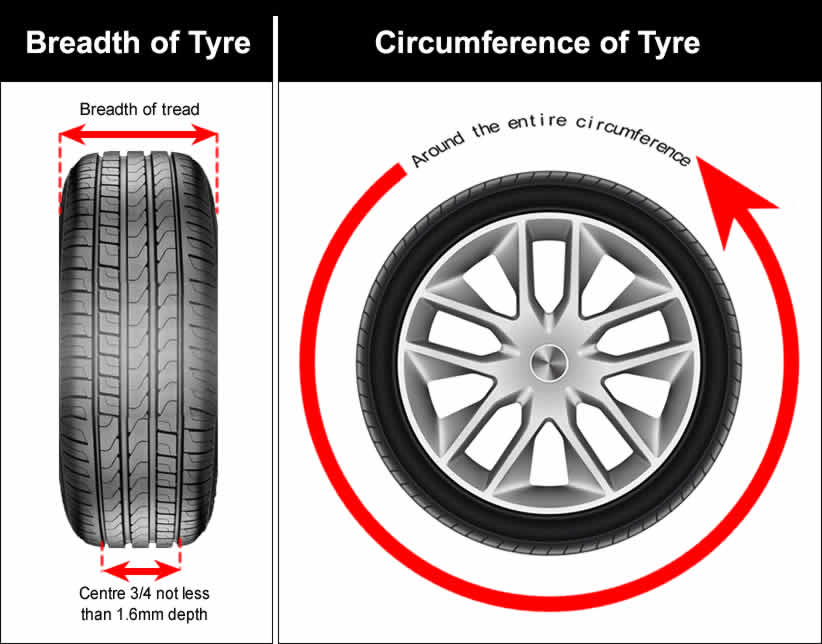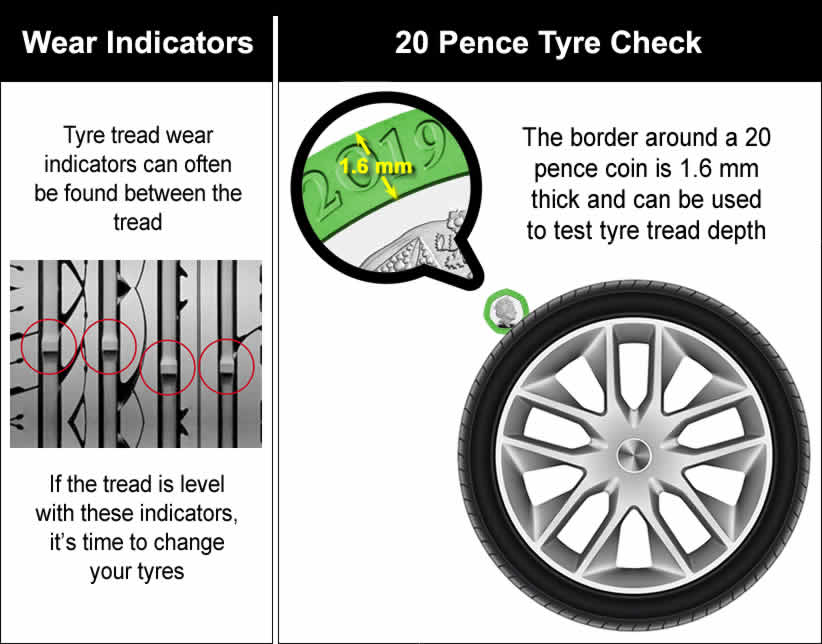At the start of a driving test, the examiner makes a few vehicle checks to ensure your car is roadworthy. One of these includes a driving test tyre check. If the examiner deems your car tyres to not be in a safe or roadworthy standard, the test will not go ahead.
That not only means that your driving test will not go ahead, but you’ll also lose your test fee and have to pay to book another test. To avoid these consequences, always check your tyres before a driving test.
How to Check Your Tyres Before a Driving Test
The examiner will be looking to ensure all four road tyres are free from cuts, missing chunks of rubber or bulges. Examiners will not check the spare tyre. So have a good look all-round your car tyres to make sure the condition is good.
Before taking the car out of a test, examiners will also be inspecting tyre tread depth. Most of the time examiners perform a simple observational check, but if they suspect a tyre may be illegal, they can use other methods to measure tread depth.

Before your driving test, check that there is at least 1.6 mm of tread depth across the centre 3/4 breadth of all four tyres and around the entire circumference of the tyre. If you’re not sure how to check, we’ll explain a couple of simple methods that you can use for checking tread depth.
How to Check the Tread Depth on My Tyres
You can purchase a cheap tyre tread depth gauge online or from most vehicle maintenance shops. Other than that, there’s two simple methods you can use to check your tyre tread depth before a driving test.

Most tyre manufacturers build in wear indicators between the ridges of the tyre’s tread pattern (see diagram). The tyre wear indicators are set at 1.6 mm high, so when a wear indicator becomes level with the tyre tread, you know it’s time to change your tyres.
The wear indicators aren’t always easy to see, particularly if you have a low sports car, so to make things a little easier for locating the wear indicators, a small arrow is often located on the tyre sidewall to indicate where they are.
Another method is to use the 20p tyre tread test. The border around a 20 pence piece is 1.6 mm (shaded green in the diagram), making it an ideal tool for measuring tread depth. The process is easy – simply place the 20p in the main tread channels within the centre 3/4 breadth of the tyre at various locations. If you can any part of the outside border, it means your tyre’s tread depth it low and probably illegal.
Tyre Pressures
Don’t forget to check your car’s tyre pressures before a driving test. Maintaining the correct tyre pressures not only prolongs the life of your tyres, but also helps to keep your car stable and steady while driving. You can find the correct tyre pressures by looking inside the driver’s door and locating the tyre pressure label.